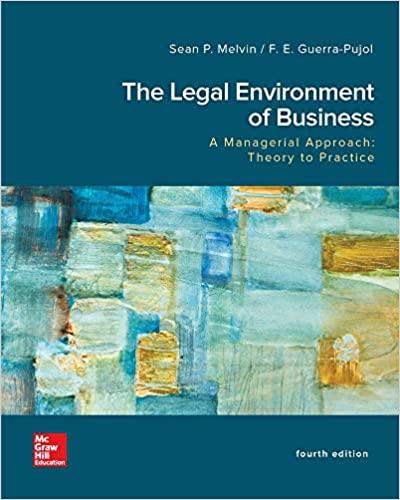Question
References Dussias, Allison M., Friend, Foe, Frenemy: The United States and American Indian Religious Freedom, Denver University Law Review. Vol. 90:2, (2012), pp. 347-431. Skibine,
References
Dussias, Allison M., Friend, Foe, Frenemy: The United States and American Indian Religious Freedom, Denver University Law Review. Vol. 90:2, (2012), pp. 347-431.
Skibine, Alex Tallchief. Towards a Balanced Approach for the Protection of Native American Sacred Sites. Michigan Journal of Race and Law, Vol. 17 (Spring 2012): pp. 269-302.
Riding In, James. Without Ethics and Morality: A Historical Overview of Imperial Archaeology and American Indians. Arizona State Law Journal. Vol. 24:11. pp. 11-34.
Question: What explains the discrepancy between how Congress deals with the religious and cultural practices of tribes and individuals within a tribe and the way the Supreme Court rules? Specifically, explain the Supreme Court decision in both the Lyng and Smith cases, which deny constitutional protections to American Indians and ignore the American Indian Religious Freedom Act of 1978. Then, discuss how the Religious Freedom Restoration Act counterbalances the court's rulings.
Next, based on your readings, what would you advocate for a more balanced approach? For example, do you believe there is a lack of understanding of why sacred sites are important to Indian people?
Finally, state your position on an international human rights law that would address the protection of cultural identity and reduce the oppression of cultural and religious practices among Indigenous peoples.
Step by Step Solution
There are 3 Steps involved in it
Step: 1

Get Instant Access to Expert-Tailored Solutions
See step-by-step solutions with expert insights and AI powered tools for academic success
Step: 2

Step: 3

Ace Your Homework with AI
Get the answers you need in no time with our AI-driven, step-by-step assistance
Get Started


